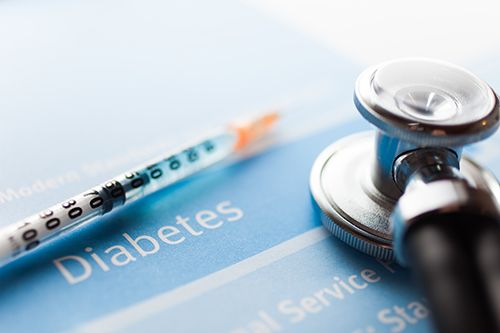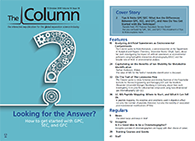Diagnosing Diabetes in Endurance Athletes Using HPLC
Researchers from the University of Verona, in Verona, Italy, have investigated the diagnosis of diabetes mellitus in endurance athletes using HPLC.
Photo Credit: Minerva Studio /stock.adobe.com

Researchers from the University of Verona, in Verona, Italy, have investigated the diagnosis of diabetes mellitus in endurance athletes using high pressure liquid chromatography (HPLC) (1).
The method by which diabetes is diagnosed is well established and the American Diabetes Association has reinforced the recommended parameters for diagnosis in the 2018 version of Standards of Medical Care in Diabetes. However, the diagnostic abilities of these tests can be influenced by preanalytical and biological factors. The measurement of two key parameters in particular, fasting plasma glucose (FPG) and random plasma glucose (RPG), has been found to be influenced by acute stress, poor glucose stability in blood tubes after collection (2), and drug interference (3). Another parameter, HbA1c, is more reliable, but some studies have found it, along with plasma glucose, to be influenced by endurance running (4–6). Reasons for this include: foot strike haemolysis, acute variations of plasma volume, improved oxygen release and deformability, and alteration of glucose availability and uptake. For these reasons the measurement of both plasma glucose and HbA1c may become potentially misleading when diagnosing diabetes.
To investigate this, researchers took samples from 38 healthy and trained endurance athletes at an event called “Run for Science” held in Verona, Italy, in April 2014 (7). The aim was to investigate the variations of plasma glucose and HbA1c up to 24 h after a half-marathon run. Plasma glucose was analyzed through specialized assay while HbA1c was analyzed using HPLC.
Results showed that the concentrations of plasma glucose is significantly decreased 3 to 24 h after endurance running, however, unlike plasma glucose, HbA1c values were almost unchanged up to 24 h after a half-marathon run. This suggests that HbA1c is a more reliable parameter for diabetes diagnosis than FPG or RPG in subjects who regularly engage in recreational or competitive endurance activity.
References
- G. Lippi et al., J. Clin. Pathol.0, 1–2 (2018).
- M. Montagnana and G. Lippi, Ann. Transl. Med.5, 257 (2017).
- G. Lippi and G. Targher, Clin. Chem. Lab. Med. 48, 609–614 (2010).
- J.A. Tuominen et al., Diabet. Med. 14, 301–308 (1997).
- E. Cauza et al., Int. J. Sports Med.26, 774 – 780 (2005).
- L. Forga et al., J. Sports Med. Phys. Fitness55, 357 (2015).
- G. Lippi and F. Schena, J. Lab. Precis. Med.2, 11 (2017).

A Novel LC–QTOF-MS DIA Method for Pesticide Quantification and Screening in Agricultural Waters
May 8th 2025Scientists from the University of Santiago de Compostela developed a liquid chromatography quadrupole time-of-flight mass spectrometry (LC–QTOF-MS) operated in data-independent acquisition (DIA) mode for pesticide quantification in agriculturally impacted waters.
Investigating 3D-Printable Stationary Phases in Liquid Chromatography
May 7th 20253D printing technology has potential in chromatography, but a major challenge is developing materials with both high porosity and robust mechanical properties. Recently, scientists compared the separation performances of eight different 3D printable stationary phases.

.png&w=3840&q=75)

.png&w=3840&q=75)



.png&w=3840&q=75)



.png&w=3840&q=75)











